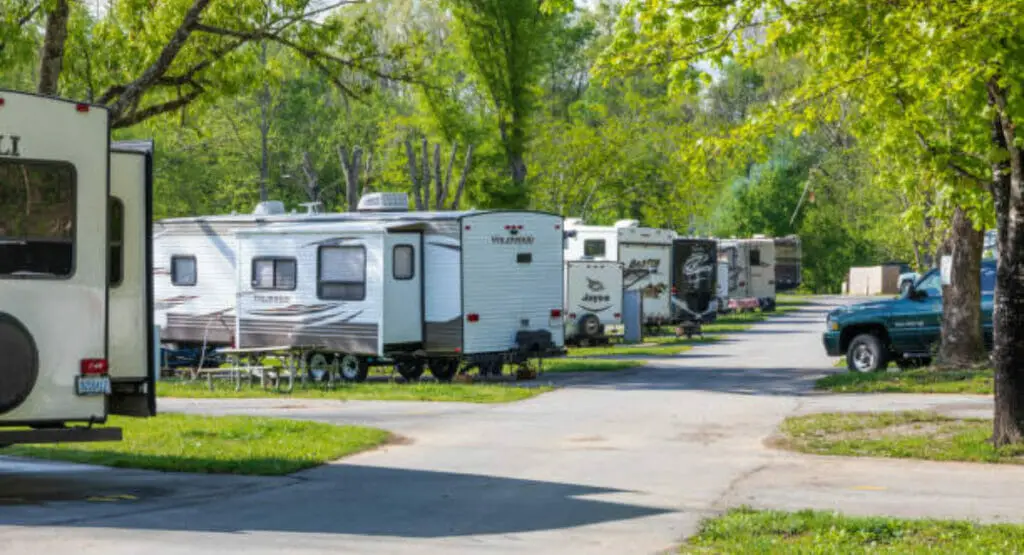Introduction
RVing can be a fun way to see the world, but running and maintaining your RV sewage system properly is critical to avoid any potential health and environmental hazards. We will give you a thorough guide on how to run and manage your RV sewage system through this RV Sewage System Operating Manual, including suggestions on understanding the components, properly dumping the sewage, and maintaining your plan for the best operation. With this knowledge, you may confidently enjoy your RV trips, knowing that you’re helping keep your environment clean and safe.
I. Understanding RV Sewage Systems
To operate an RV sewage system efficiently, you must first understand its components. A black water tank contains waste from the toilet, and a grey water tank holds water from sinks and showers in an RV sewage system. The sewage hose connects the RV to the dump station, where the trash can be disposed of properly. In order to operate and maintain your RV sewage system effectively, you must first understand how these components interact.
The RV sewage system works by collecting waste from the toilet and water from sinks and showers in the black water tank and waste from the sinks and showers in the grey water tank. When the tanks are full, the waste must be disposed of appropriately at a disposal station. This is accomplished by opening the valves on the black and grey water tanks, allowing waste to flow via the sewage hose and into the dump station. After emptying the tanks, properly rinse them with clean water to prevent buildup and odours. It is critical to keep your RV sewage system in good working order so that it can continue to function effectively and safely.
II. How to Dump RV Sewage
Dumping your RV sewage correctly is an important part of maintaining your RV sewage system. The following are the things to do for safe and effective dumping:
Dumping Preparation:
1. Find the dump station: Before you start the dumping process, you need to locate the nearest dump station. Many campgrounds and RV parks have dump stations available for their guests to use.
2. Prepare your RV: Make sure all of your faucets are turned off and any appliances that use water are disconnected. This will ensure that the tanks are as empty as possible before you start dumping.
3. Use gloves and other protective equipment: Using gloves and other protective equipment will help avoid contamination and keep you safe during the dumping procedure.
Proper Dumping Procedures:
1. Connect the sewer hose: Attach one end of the sewer hose to the waste valve on the RV and the other end to the dump station inlet.
2. Open the black water tank valve: Open the valve slowly to allow the black water tank’s contents to drain into the dump station. It is critical to go slowly to avoid splashing or backflow.
3. Empty the grey water tank: Once the black water tank is empty, open the valve for the grey water tank to let it drain into the dump station.
4. Rinse the tanks: After emptying both tanks, use the RV’s built-in rinse system or a separate hose to completely rinse out the tanks.
Maintenance After Dumping:
1. Disconnect the Sewer Hose: After the tanks have been emptied and cleaned, disconnect the sewer hose from the RV and the dump station.
2. Store the hose correctly: To avoid any contamination or odors, properly rinse the hose before storing it in a dedicated spot.
3. Sanitize the tanks: To help avoid buildup and odors, add a tank cleaner and sanitizer to the black water tank.
Before dumping your RV sewage, it’s important to prepare properly. This includes wearing gloves, connecting the sewer hose securely, and making sure the dump station is available. When you’re ready to dump, open the black water tank valve first, then the gray water tank valve. Rinse the tanks thoroughly with clean water, and close the valves. Finally, add chemicals to the tanks to help waste decomposition. By following these steps, you can properly dispose of your RV sewage and keep your system running smoothly.
III. RV Sewage System Maintenance
Frequent maintenance of your RV sewage system is required to avoid problems and ensure proper operation. These are some routine maintenance chores you should carry out:
Regular Maintenance Tasks
1. Monitor tank levels: Check the levels of your black and gray water tanks on a regular basis to avoid overflowing.
2. Use tank treatments: Apply tank treatments to help break down waste and prevent odors in the tank.
3. Utilize the built-in RV rinse system: To properly rinse out the tanks after each dump, use the RV’s built-in rinse system.
4. Repair old or broken components: Replace any worn or broken components, such as hoses or valves.
Troubleshooting Common Problems
1. Odors: To prevent odors, use tank treatments and disinfect the tanks.
2. Clogs: Remove any clogs in the system with a plunger or a plumbing snake.
3. Leaks: Check hoses and valves for leaks and replace any worn or broken components.
Tips for Preventing Problems
1. Use biodegradable and RV-safe toilet paper: This will prevent clogs and ensure that the waste breaks down properly.
2. Wait until tanks are at least two-thirds full before dumping: Dumping too soon may result in partial tank emptying.
3. Avoid using harsh chemicals or cleaners: These can damage the system and cause leaks.
The optimal operation and lifespan of your RV sewage system depend on regular maintenance. This includes flushing and cleaning the tanks on a regular basis, inspecting for leaks or damage, and utilizing chemicals to promote healthy bacteria development. There are measures you may take to troubleshoot and resolve problems, such as obstructions or odors. Preventive actions, such as using biodegradable toilet paper and avoiding specific meals, can also help keep your system functioning properly.
Conclusion
To summarise, understanding how your RV sewage system works and maintaining it properly are critical for preventing problems and ensuring peak performance. Monitoring tank levels, utilizing tank treatments, and repairing old or damaged components are all part of routine maintenance. Fixing typical problems like odors, blockages, and leaks is also vital, as is taking precautions to prevent problems, such as using biodegradable toilet paper and avoiding harsh chemicals or cleansers.
Correct operation of your RV sewage system is crucial not only for your own comfort and convenience but also for the environment and public health. Mishandling RV garbage can contaminate and endanger both people and wildlife. By following the RV Sewage System Operating Manual, you can enjoy worry-free travel while still being a responsible camper.



